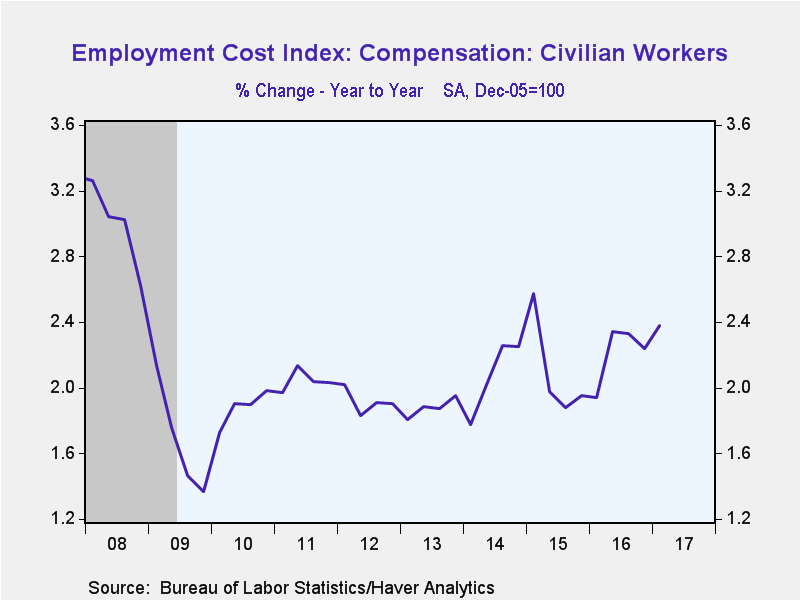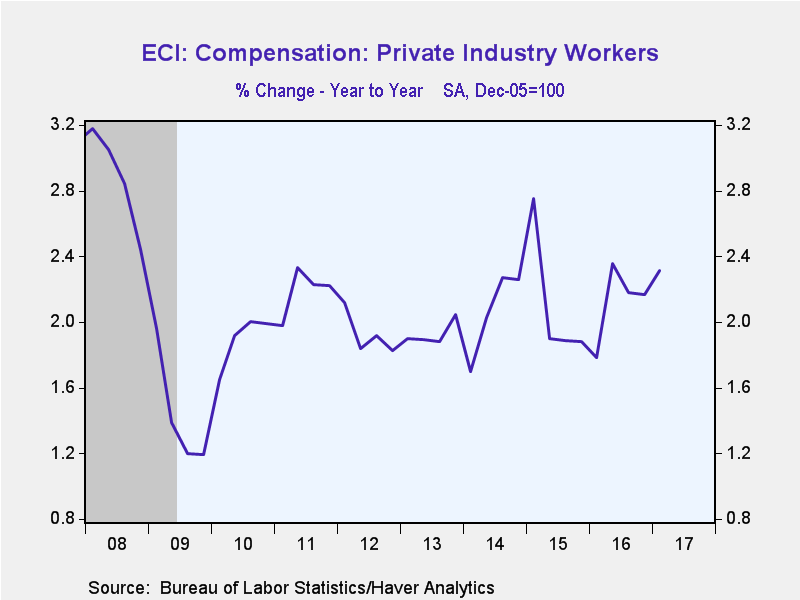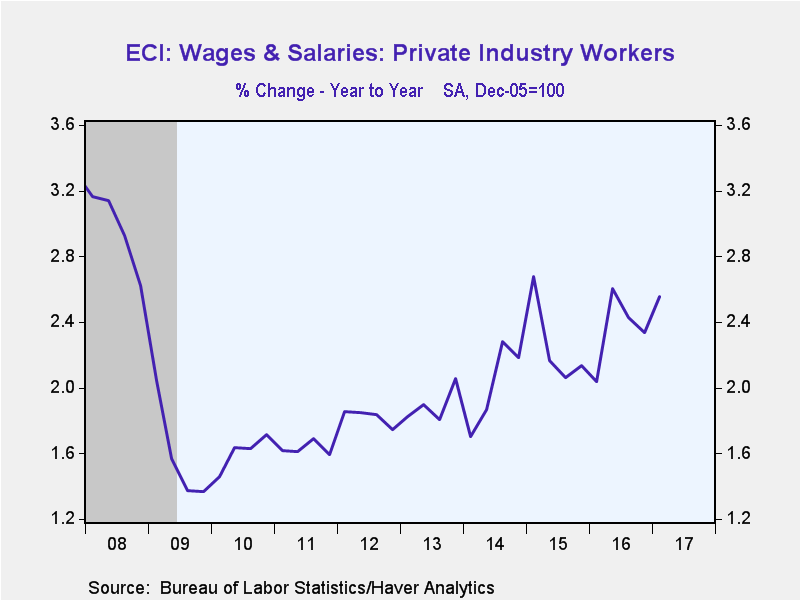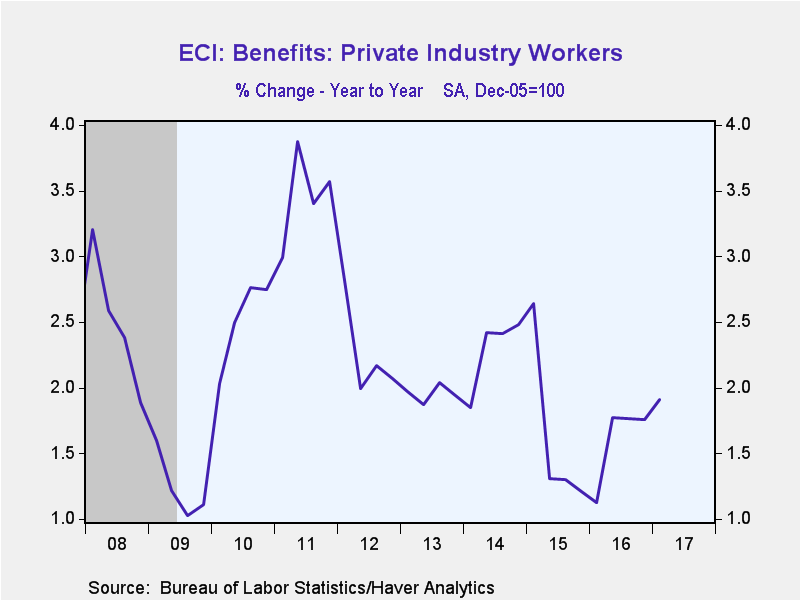 Global| Apr 28 2017
Global| Apr 28 2017U.S. Employment Cost Index Has Stronger Gain
Summary
Lifted by outsized rises in several industries, the employment cost index for civilian workers rose 0.8% (2.4% y/y) during Q1'17, compared to just 0.5% in Q4'16. A 0.6% rise had been expected in the Action Economics Forecast Survey. [...]
Lifted by outsized rises in several industries, the employment cost index for civilian workers rose 0.8% (2.4% y/y) during Q1'17, compared to just 0.5% in Q4'16. A 0.6% rise had been expected in the Action Economics Forecast Survey. Wages and salaries also increased 0.8% (2.5% y/y) after a 0.5% rise, and benefits were up 0.7% (2.2% y/y) following a 0.5% gain.
The employment cost index for private industry workers also rose 0.8% (2.3% y/y) following a 0.5% gain. Among industries, the biggest increase came in leisure & hospitality, 1.9% in the quarter (4.3% y/y) after 0.6% the previous period; there were 1.0% quarterly gains in construction (2.5% y/y) after 0.7%, and in trade, transportation & utilities (2.7% y/y), which followed 0.5% in Q4. Professional & business services had a 0.9% (1.6% y/y) increase after just 0.2% in Q4. Manufacturing sector compensation rose 0.5% (2.1% y/y), the same as in Q4; with a like pattern for private sector education & health workers. The industries where worker compensation slowed were information, 0.3% (1.7% y/y), down from 0.5%, and finance, just 0.2% (2.9% y/y) after 0.6%. In the public sector, compensation of state and local government workers rose 0.6% (2.6% y/y), the same as in Q4.
Wages and salaries in private industry rose 0.9% (2.6% y/y). The pattern of strength and weakness among industries was very similar to total compensation; leisure & hospitality wages advanced 1.6% (4.6% y/y), trade, transportation & utilities were up 1.5% (3.1% y/y) and construction sector wages gained 1.1% (2.7% y/y). Professional & business services workers saw a 0.7% raise (1.4% y/y), while manufacturing and education & health both had 0.6% increases (manufacturing 2.6% y/y and education & health, 2.2% y/y). Wages were flat in the information sector (2.0% y/y), and they actually went down 0.2% in finance (2.8% y/y). State and local government workers' wages increased 0.6% (2.2% y/y).
Benefits for private industry workers picked up a bit in Q1'17, growing 0.6% (1.9% y/y) after Q4's 0.4%. The rise in manufacturing workers' benefits increased 0.5% (1.5% y/y) after just 0.2% in Q4. Private service industry benefits firmed noticeably, by 0.8% (2.0% y/y) following just 0.3%. In the public sector, state and local government worker benefits were up 0.8% (3.2% y/y) after Q4's 0.7% increase.
The employment cost index figures are available in Haver's USECON database. Consensus estimates come from the Action Economics survey, carried in Haver's AS1REPNA database.
Carol Stone, CBE
AuthorMore in Author Profile »Carol Stone, CBE came to Haver Analytics in 2003 following more than 35 years as a financial market economist at major Wall Street financial institutions, most especially Merrill Lynch and Nomura Securities. She has broad experience in analysis and forecasting of flow-of-funds accounts, the federal budget and Federal Reserve operations. At Nomura Securites, among other duties, she developed various indicator forecasting tools and edited a daily global publication produced in London and New York for readers in Tokyo. At Haver Analytics, Carol is a member of the Research Department, aiding database managers with research and documentation efforts, as well as posting commentary on select economic reports. In addition, she conducts Ways-of-the-World, a blog on economic issues for an Episcopal-Church-affiliated website, The Geranium Farm. During her career, Carol served as an officer of the Money Marketeers and the Downtown Economists Club. She has a PhD from NYU's Stern School of Business. She lives in Brooklyn, New York, and has a weekend home on Long Island.









